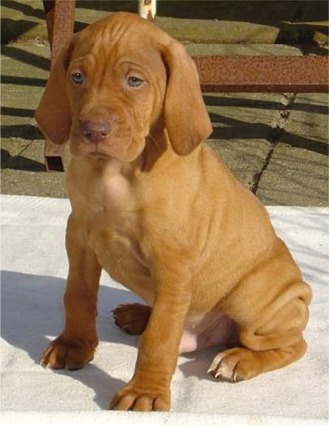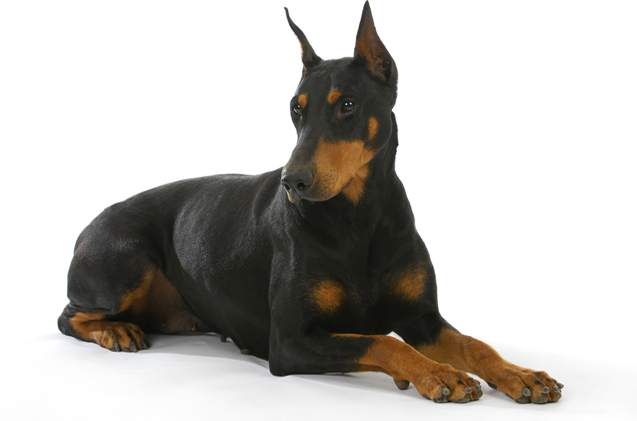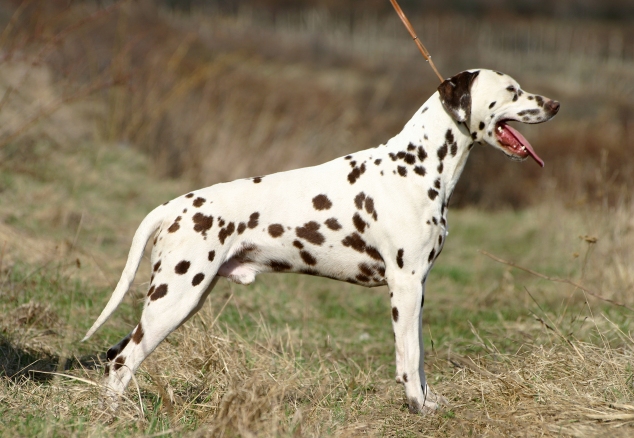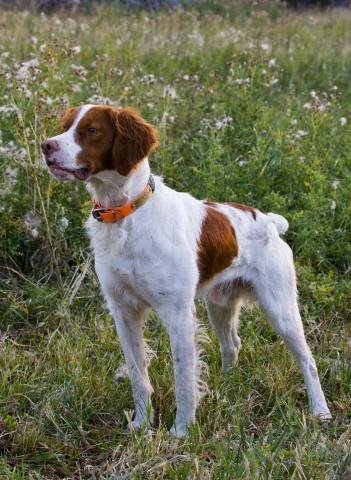History: It has been said that the Vizsla originated in Austria and Hungary, dating back to the 14th century. The ancestors were said to be hunters, part retriever and part pointer. Back then, only noble or wealthy individuals owned these dogs. This is how the blood line was preserved so well. Later on the Vizsla was mixed with a Weimaraner and a German Short-Haired Pointer.
Description: The Vizsla is a medium size dog. Their muscular bodies are built for activity and lots of running. They are cinnamon in color throughout their entire body. Their coats are short, smooth, and dense. An interesting fact about Vizslas, is that the iris of their eye is all brown. You cannot see any white when looking in their eyes.
Size: The average male is 22-25 inches weighing up to 45-66 pounds. The female is 21-24 inches and weighs about 40-55 pounds.
Temperament: These dogs are very loyal and affectionate. Vizslas form a strong bond with their owner and family. The Vizsla has been given the nickname “velcro-dog”. This because if they aren’t outdoors playing, they are by your side or sitting on your lap. Yes, Vizslas make a good family dog, but you need to be careful when they are around young children. This is due to their high level of energy and wanting to play a lot. Vizslas were born with a natural instinct to hunt, but like most hunting dogs, they require training. It is recommended to train them slowly, because they can become overwhelmed very easily.
Grooming: The Vizsla is a very low- maintenance dog. They are good at self-cleaning, and don’t have the ‘dog odor’ that some people tend to smell. Some owners recommended wiping them down with a dry rag twice a week. That way they stay clean and you should only bathe them 3-5 times a year.
Health: Vizsla’s are known to have a few common health issues. The Vizsla Club of America participates in a canine health database. Before a Vizsla can be registered for a number, they need to be tested for certain ailments, and the owner must provide all test results. Most breeders are careful and monitor the bloodlines when considering a mate for their dog. They can use the health database Canine Health Information Center (CHIC) to gather information concerning a Vizslas health history.
Common health issues include:
- hip dysplasia
- Von Willebrand’s disease
- cancer
- hypothyroidism
- eye disorders
Exercise: This dog requires about 30-60 minutes of exercise daily. And when I say exercise, I don’t mean just a walk around the block. The Vizslas love to run and play. If you live in town or in an apartment, you might want to reconsider getting a Vizsla. They enjoy going hunting, running around outdoors, agility courses, and playing fetch.
Lifespan: The Vizsla tends to live 10-14 years.
Keep in Mind: Even though you have provided your Vizsla with lots of attention and exercise, they can still become bored. Especially when they are home alone. These dogs are known for chewing, so make sure they have toys of their own to keep them busy and play with.
Sources:
http://www.animalplanet.com/tv-shows/dogs-101/videos/vizsla.htm
http://www.animalplanet.com/tv-shows/dogs-101/videos/vizsla.htm
http://en.wikipedia.org/wiki/Vizsla











